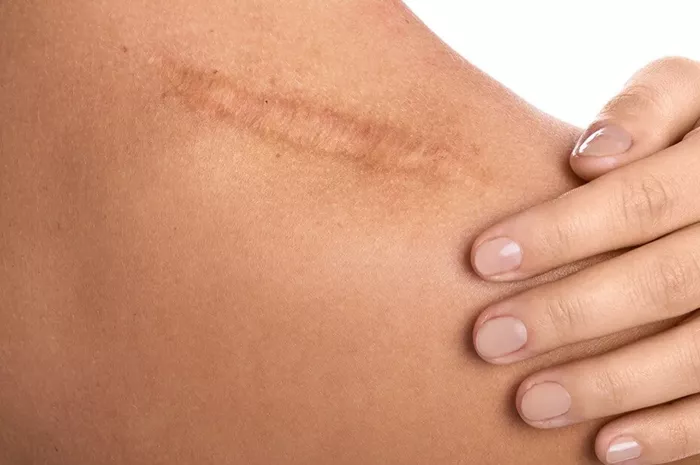Scars are a natural part of the body’s healing process, but they can sometimes be unsightly or uncomfortable. Many people seek effective treatments to reduce the appearance of scars, whether they are old or new. Silicone-based products are among the most popular and widely recommended options for scar treatment. This article will explore whether silicone helps old scars, the mechanisms behind its effectiveness, and the various forms of silicone scar treatments available.
Understanding Scars
What Are Scars?
Scars form as part of the body’s natural healing process after an injury to the skin. When the dermis (the second layer of skin) is damaged, the body produces collagen fibers to repair the wound, resulting in a scar. The appearance and texture of scars can vary significantly depending on factors such as the nature of the injury, the healing process, and individual skin type.
Types of Scars
There are several types of scars, each with unique characteristics:
Atrophic Scars: These scars appear as sunken or pitted areas in the skin, often resulting from acne or chickenpox.
Hypertrophic Scars: Raised and red scars that remain within the boundaries of the original wound.
Keloid Scars: Thick, raised scars that extend beyond the original wound boundaries and can continue to grow over time.
Contracture Scars: These scars occur when the skin tightens due to a burn or other significant injury, potentially affecting movement.
How Silicone Works on Scars
Mechanism of Action
Silicone’s effectiveness in scar treatment is attributed to several mechanisms:
Hydration: Silicone creates a protective barrier over the scar, helping to retain moisture in the skin. This hydration is crucial for keeping the scar tissue soft and flexible, which can improve the scar’s appearance over time.
Protection: The barrier formed by silicone protects the scar from environmental factors, reducing the risk of further irritation or injury.
Collagen Regulation: Silicone can help regulate the production of collagen, preventing excessive collagen buildup that can lead to raised or hypertrophic scars.
Reduced Redness and Discoloration: Silicone can help reduce the redness and discoloration often associated with scars, making them less noticeable.
Scientific Evidence
Numerous studies have supported the efficacy of silicone in scar treatment:
A 2009 study published in the journal Plastic and Reconstructive Surgery found that silicone gel sheets significantly improved the appearance of hypertrophic and keloid scars.
A 2013 review in the journal Dermatologic Surgery concluded that silicone gel and sheets are effective in reducing scar thickness, redness, and elasticity.
A 2016 study in the Journal of Cutaneous and Aesthetic Surgery demonstrated that silicone gel improved the appearance of surgical scars over a 12-week period.
Silicone for Old Scars
Effectiveness on Old Scars
While silicone is well-known for its effectiveness on new scars, its impact on older scars is also noteworthy. Old scars, which are typically more than a year old, can still respond to silicone treatment, although the process may take longer and the results may be less dramatic than with newer scars.
Factors Influencing Effectiveness
Several factors can influence the effectiveness of silicone on old scars:
Scar Age: The older the scar, the longer it may take to see significant improvements. However, consistent and prolonged use of silicone products can still yield positive results.
Scar Type: Raised scars, such as hypertrophic and keloid scars, may respond better to silicone treatment compared to atrophic scars.
Consistency of Use: Regular and consistent use of silicone products is crucial for achieving optimal results. Daily application over several months is often necessary.
Individual Skin Characteristics: Skin type, color, and individual healing processes can impact how well silicone works on old scars.
Types of Silicone Scar Treatments
Silicone Gel Sheets
Silicone gel sheets are one of the most common forms of silicone scar treatment. These sheets are applied directly to the scar and worn for several hours each day. They are reusable and can be cut to fit the size and shape of the scar.
Advantages: Gel sheets provide a consistent and even layer of silicone over the scar, maintaining hydration and protection.
Usage: Typically worn for 12-24 hours a day, with regular replacement as the sheets lose adhesiveness.
See Also: 5 Best Cream for Scars After Surgery
Silicone Gels
Silicone gels are applied directly to the scar and allowed to dry, forming a thin, flexible layer of silicone. These gels are particularly convenient for areas where sheets are difficult to apply, such as joints or irregularly shaped scars.
Advantages: Easy to apply and can be used on scars in hard-to-reach areas.
Usage: Applied 2-3 times a day, with continuous use recommended for several months.
Silicone Creams and Ointments
Silicone creams and ointments combine silicone with other beneficial ingredients, such as vitamins and moisturizers. These products can provide additional skin care benefits while treating the scar.
Advantages: Provides added moisturization and can improve overall skin health.
Usage: Applied similarly to gels, with regular daily application required.
Silicone Adhesive Dressings
Silicone adhesive dressings are similar to gel sheets but come with an adhesive backing, making them easier to apply and keep in place. These dressings are often used for surgical scars and other large or prominent scars.
Advantages: Easy to apply and secure, providing consistent silicone coverage.
Usage: Worn for extended periods, with regular replacement as needed.
Benefits of Silicone for Scar Treatment
Non-Invasive and Painless
Silicone scar treatments are non-invasive and painless, making them an attractive option for individuals seeking to improve their scars without undergoing surgical procedures or other more invasive treatments.
Suitable for All Skin Types
Silicone is generally well-tolerated by all skin types, including sensitive skin. It does not cause irritation or allergic reactions, making it a safe option for most people.
Versatility
Silicone can be used on various types of scars, including surgical scars, burn scars, and scars from injuries. Its versatility makes it a valuable tool in scar management.
Evidence-Based
The effectiveness of silicone in scar treatment is supported by numerous clinical studies and reviews, providing a strong evidence base for its use.
How to Use Silicone Products for Old Scars
Consistent Application
Consistency is key when using silicone products for scar treatment. For old scars, it is essential to apply the product daily, following the recommended usage instructions. Results may take several months to become noticeable, so patience and persistence are crucial.
Clean and Dry Skin
Before applying silicone products, ensure the skin is clean and dry. This helps the silicone adhere better and increases its effectiveness.
Combine with Other Treatments
For optimal results, consider combining silicone treatments with other scar management strategies, such as massage, moisturizing, and sun protection. Discuss with a dermatologist or healthcare professional to develop a comprehensive scar treatment plan.
Monitor Progress
Regularly monitor the progress of the scar treatment. Take photos and note any changes in the scar’s appearance, texture, and size. This can help determine the effectiveness of the treatment and make any necessary adjustments.
Potential Limitations and Considerations
Individual Variation
The effectiveness of silicone treatments can vary from person to person. Some individuals may see significant improvements, while others may experience more modest results. Individual factors, such as skin type, scar type, and adherence to the treatment regimen, can influence outcomes.
Duration of Treatment
Silicone treatments require a long-term commitment, often involving daily application for several months. This duration can be challenging for some individuals, particularly those seeking quicker results.
Cost
High-quality silicone products can be relatively expensive, particularly if they are used consistently over an extended period. However, the investment is often worthwhile given the potential benefits in scar appearance and comfort.
Availability
Silicone scar treatments are widely available, but it is essential to choose reputable products from trusted manufacturers. Consult a healthcare professional for recommendations if needed.
Conclusion
Silicone-based products are among the most effective and widely recommended options for scar treatment, including old scars. Their ability to hydrate, protect, and regulate collagen production can significantly improve the appearance and texture of scars over time. While the effectiveness of silicone on old scars may take longer to manifest compared to new scars, consistent and prolonged use can yield positive results. With various forms of silicone treatments available, including gel sheets, gels, creams, and adhesive dressings, individuals can find a suitable option to incorporate into their scar management routine. Always consult with a healthcare professional to determine the best approach for treating old scars and achieving the desired outcomes.
[inline_related_posts title=”You Might Be Interested In” title_align=”left” style=”list” number=”6″ align=”none” ids=”10530,10439,10399″ by=”categories” orderby=”rand” order=”DESC” hide_thumb=”no” thumb_right=”no” views=”no” date=”yes” grid_columns=”2″ post_type=”” tax=””]


































